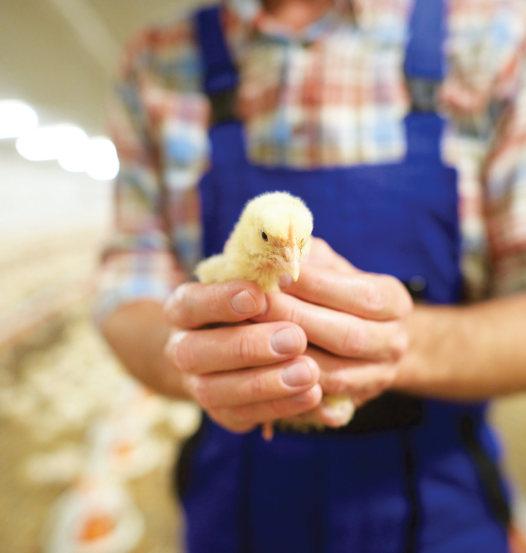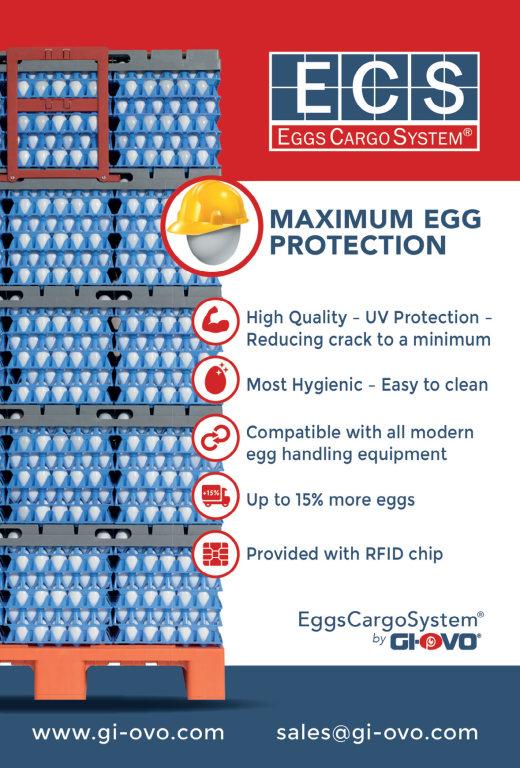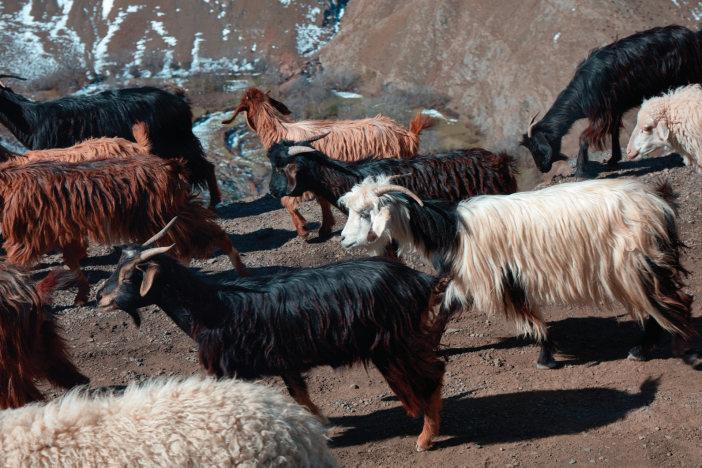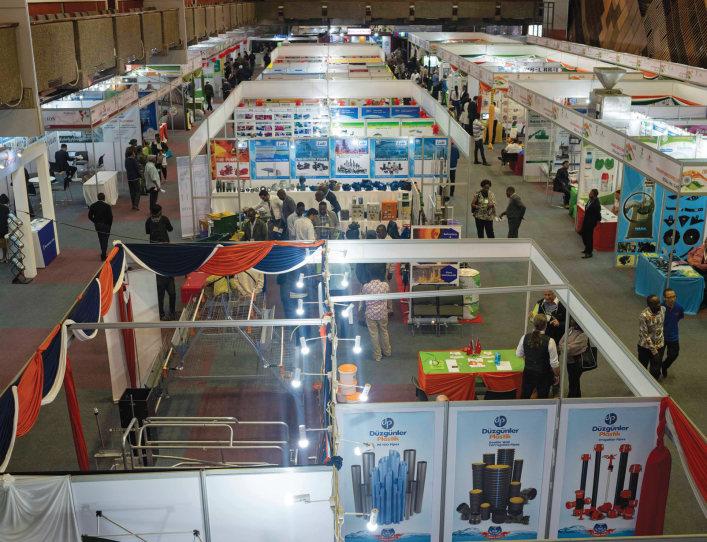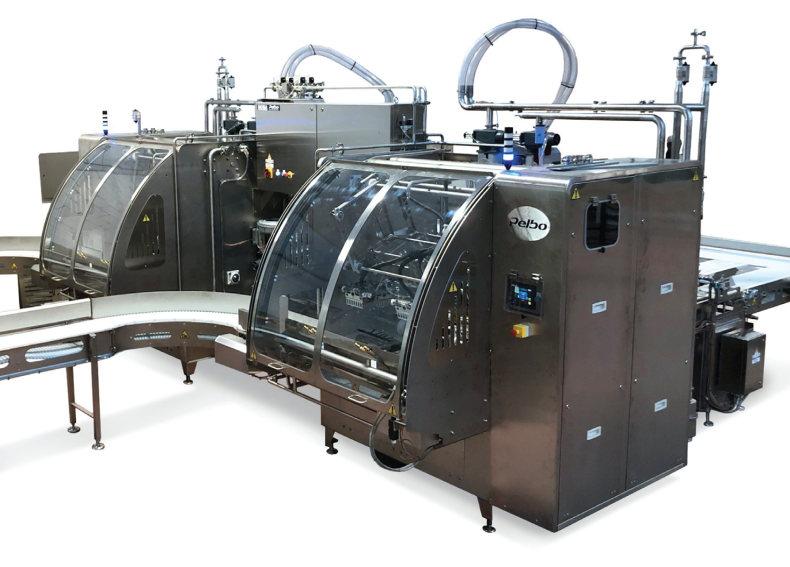
12 minute read
Poultry
Data management solutions play a crucial role in the success of a poultry farm. Ahmed Khater, technical service manager, Evonik, explains.
How to boost poultry profits and productivity with data
SUCCESSFUL POULTRY FARM management depends on farm managers and staff making the right decisions at the right time, and data plays a major role in facilitating this.
Properly organising, centralising, analysing and sharing the growing amounts of data available from a modern poultry farm, however, is not easy, yet there are clear benefits to using data to achieve precision poultry farming.
Poultry farm data in this context, refers to production data – feed consumption, water consumption, body weight, egg production, egg weight, climate, and medication, for example, and financial data – egg prices, feed prices, chick prices, and hen prices, for example. These data sets are key performance indicators (KPIs).
Optimising data
Everything starts with structured – and, most importantly, regular data collection. In practice, most poultry farmers work with paper or Excel, followed by farm management systems or smartphone apps. Digital is the future, but in larger organisations, collecting and centralising data in a structured and scalable way can become a highly complex burden. Fortunately, the internet and the cloud are making this easier.
Mining production data
Good poultry production management is carried out at least daily, and Excel tools become harder to use when you add daily graphs and tables. Farm management programmes are more suitable for interactive graphs for all KPIs, although they too have limitations.
Extracting this information necessitates that farm staff have a certain level of expertise, both in poultry farming and data interpretation. Problem detection, via early warning systems, is increasingly included in farm management systems, based on fixed deviations from general standards.
The next step in data analysis is prediction. This not only helps with adjusting feeding strategies to achieve performance goals, it also supports production planning and cash flow management.
Information sharing
Once analysis has provided the required information, it needs to be shared with the relevant people in and around the poultry business. Sharing should be simple and easy, so that each person has the relevant information at his or her fingertips. Only in this way can everyone play his or her full role. For data sharing, cloud-based solutions are the way forward.
Improved poultry business
The farm manager takes the lead, empowering and motivating staff. Then, trusted experts need to be selected: a nutritionist – independent or from a feed company – for optimising feeding strategies, a veterinarian for health and hygiene, a farm business or financial consultant for business and/or financial strategies.
With all this expertise focused on the broiler or egg business, insight increases and decision making is improved. Improvement does not only occur in decisions relating to the farm’s daily operational management, but also in strategic decision making, such as for feed and genetic choices.
Cloud-based solutions service – farm intelligence solutions
Adopting new technologies to improve bird performance, connecting farms via the internet, applying powerful data-analytics tools to turn data into valuable information and sharing it on mobile devices, can raise output and improve the bottom line.
Data management considerations for poultry farms: ● Choose the data collection strategy that fits the farm and matches goals. ● Let graphical and advanced analysis tools support data interpretation. ● Share information with all relevant persons in and around the business. ● Create a unique living expert system.
Evonik Porphyrio offers an intelligent data management solution to optimise production, as well as profits with small algorithms that do the thinking for the business. h
Using data to achieve precision poultry farming helps in right decision making.
Kemin launched KemTRACE Chromium-OR for organic livestock and broiler
KEMIN INDUSTRIES, A specialist ingredient manufacturer, has launched KemTRACE Chromium-OR – an organic-compliant chromium propionate feed ingredient for use in swine, cattle, and broiler diets.
KemTRACE Chromium-OR is a highly bioavailable, organic-compliant source of chromium propionate that helps improve glucose utilisation and reduce the negative impacts of stress for increased cellular energy and function. This results in improved maintenance, reproduction, growth and immunity for swine, cattle and broilers.
The Organic Materials Review Institute (OMRI) is an international non-profit organisation that provides an independent review of product inputs – including livestock feed ingredients – intended for use in organic production and processing.
KemTRACE Chromium-OR has been reviewed by OMRI against the USDA NOP standards. After evaluation, OMRI determined that KemTRACE Chromium-OR is permitted for use as a mineral livestock feed ingredient in organic production and processing and is now considered OMRI Listed.
“We are thrilled to add KemTRACE Chromium-OR to our trace mineral portfolio,” said Kristi Krafka, vice- president of Regulatory Affairs and Quality Assurance, Kemin Animal Nutrition and Health – North America. “Livestock and broiler production is continually evolving, and at Kemin, we aim to advance our product offerings alongside it. KemTRACE Chromium-OR is backed by all the research, safety and efficacy we have built up for decades with our flagship chromium propionate product, KemTRACE Chromium. This organic-compliant formulation puts a new tool in the toolbox for organic producers looking to improve the health and performance of their animals.”
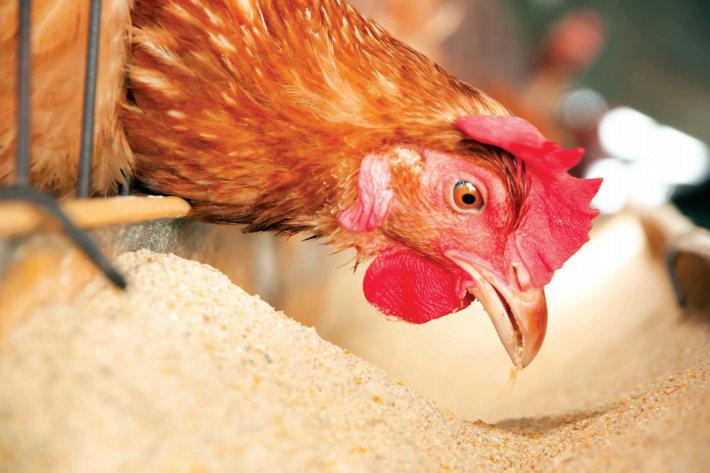
OMRI determined that KemTRACE Chromium-OR is permitted for use as a mineral livestock feed ingredient in organic production.
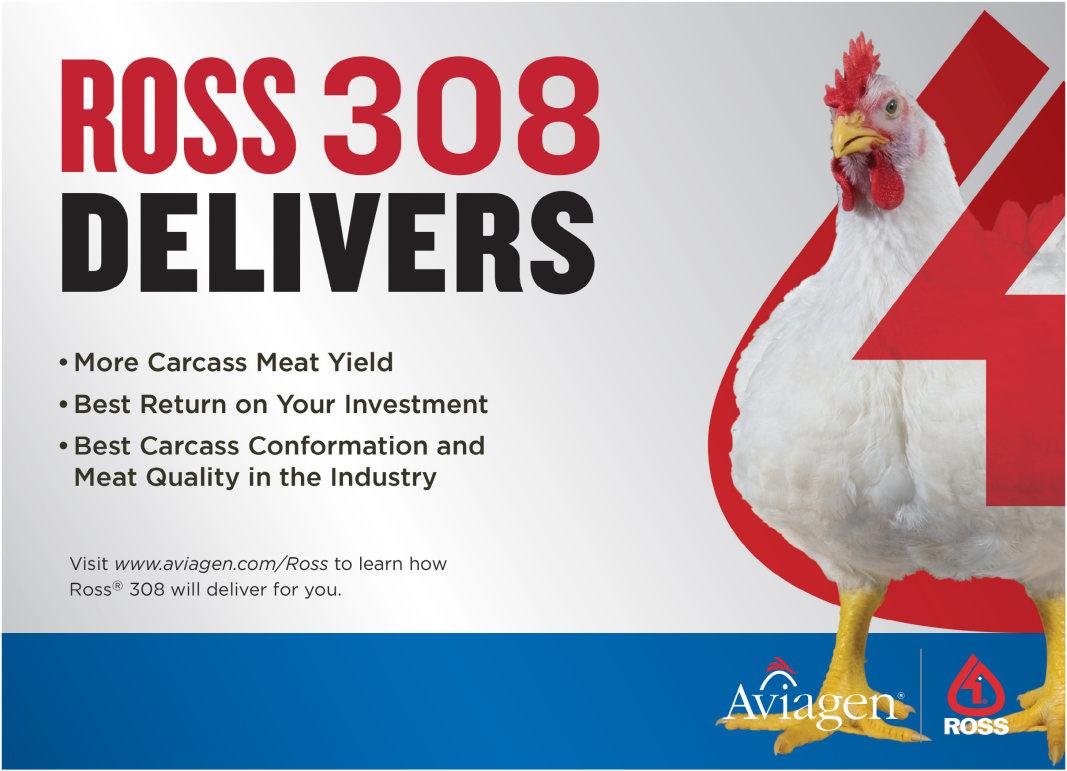
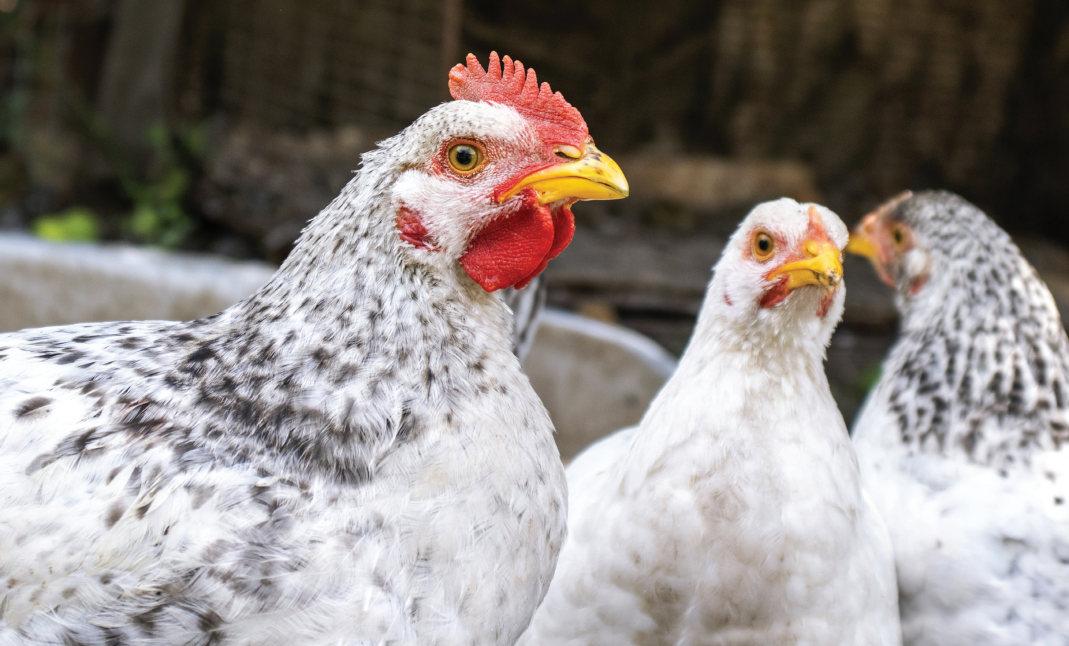
The Poultry Sense product portfolio joins Merck Animal Health Intelligence.
MERCK ANIMAL HEALTH, a division of Merck & Co, has acquired PrognostiX Poultry Limited d/b/a Poultry Sense from its founding shareholders.
Poultry Sense is an innovator in health and environmental monitoring solutions for the poultry industry. In March 2019, Merck Animal Health invested in Poultry Sense, to support their development.
Poultry Sense, a privately held company located in Exeter, UK, provides enhanced technology for poultry farmers to continuously track and analyse overall health performance for the life of the flock; it provides users with the capability to measure, compare and record key health and environmental indicators captured by battery-powered, wireless sensors in the poultry barn, as well as to identify patterns and trends to predict health and well-being and, ultimately, prevent disease and improve performance.
This innovative technology is an important tool used to assess an animal’s health and well-being, which contributes to enhanced productivity and efficacy measures on the farm and, ultimately, to better food safety and security. The sensors allow farmers to monitor and assess vital parameters by measuring weight, water usage, humidity, light, temperature and carbon dioxide. Farmers can therefore gain insight into the housing environment, as well as bird health and performance.
This proprietary technology can detect health conditions earlier in poultry that can lead to illness, thus reducing the potential for disease outbreak. This notification is done via software reports in an easy-to-read dashboard in real-time on any mobile device, desktop, tablet or secure website, which also connects to the cloud.
Rick DeLuca, president, Merck Animal Health, said, “We now will be able to provide enhanced health and environmental monitoring technology to the poultry industry, which adds to our technological expertise within our livestock monitoring business with beef and dairy cattle as well as aquaculture, strengthening our leadership in shaping the future of animal health.
“Our goal is to improve the detection of animal illness and enable more preventative solutions, including vaccination, to maintain the health of livestock. We are at the technological forefront of shaping the future of animal health through our commitment to leveraging our scientific and technical capabilities and expertise through comprehensive solutions to manage the health, wellbeing and performance of animals.”
The Poultry Sense product portfolio joins Merck Animal Health Intelligence, a newly formed specialised operating unit that takes its name from the company’s strategic vision for animal health intelligence and data expertise. Merck Animal Health Intelligence is a complementary business that specialises in identification, traceability, monitoring solutions and services to help improve animal management and health outcomes.
“The addition of specialised, digital technology within our portfolio of medicines, vaccines and services, provides holistic solutions to help advance animal health and complements our existing identification and monitoring technology that delivers real-time, actionable data and insights to help, improve or enhance animal management and health outcomes,” said DeLuca.
In April 2019, Merck Animal Health announced the completion of its acquisition of market-leading brands Allflex Livestock Intelligence, Sure Petcare and Biomark as leaders in emerging digital technology with animal identification, animal monitoring and smart data management for livestock and companion animals. In June 2020, the company acquired Quantified Ag, an innovator in data and analytics that monitors cattle body temperature and movement to detect illness early. In August 2020, the company acquired IdentiGEN, a leader in DNA-based animal traceability solutions for livestock and aquaculture.
Ensuring smooth feed transitions
AVIAGEN GROUP PROVIDES some points for consideration in correctly managing feed transitions.
Broilers experience a number of changes in feed ration throughout their life. These changes in both feed specification (starter, grower, finisher) and feed texture (mash, crumb, pellet) ensure that the birds receive the correct nutrition for their development and growth.
Correctly managing feed transitions are vital to final flock performance: ● Helps maintain and may improve flock uniformity ● Reduces impacts to carcass quality ● Maintains water intake ● Reduces feed flicking ● Maintains gut health ● Ensures continued feed nutrient intake
To avoid reductions in growth and negative impacts on flock uniformity manage the transition to a new feed carefully. ● Smooth feed transitions are vital to final flock performance ● Transition to a new feed must be made gradually. ● Add a new feed on top of the current feed so that the two can mix together.
A change from Starter to Grower involves a change in specification and, usually,feed form. Providing the first delivery of the grower feed as a crumb or mini pellet will help prevent reductions in feed intake. ● Monitor bird behaviour closely around all feed deliveries but especially before, during and after a feed transition to
ensure there are no changes in feeding and drinking behaviour. ● If changes in feeding behaviour and flock performance are seen, investigate feed form and nutrient density. Aviagen broiler breeders supply day-old grandparent and parent stock chicks to more than 100 countries worldwide.
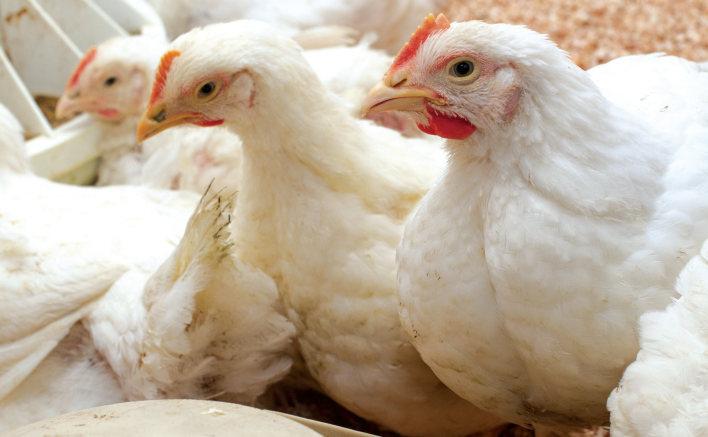
Managing feed transitions correctly is vital for flock health.
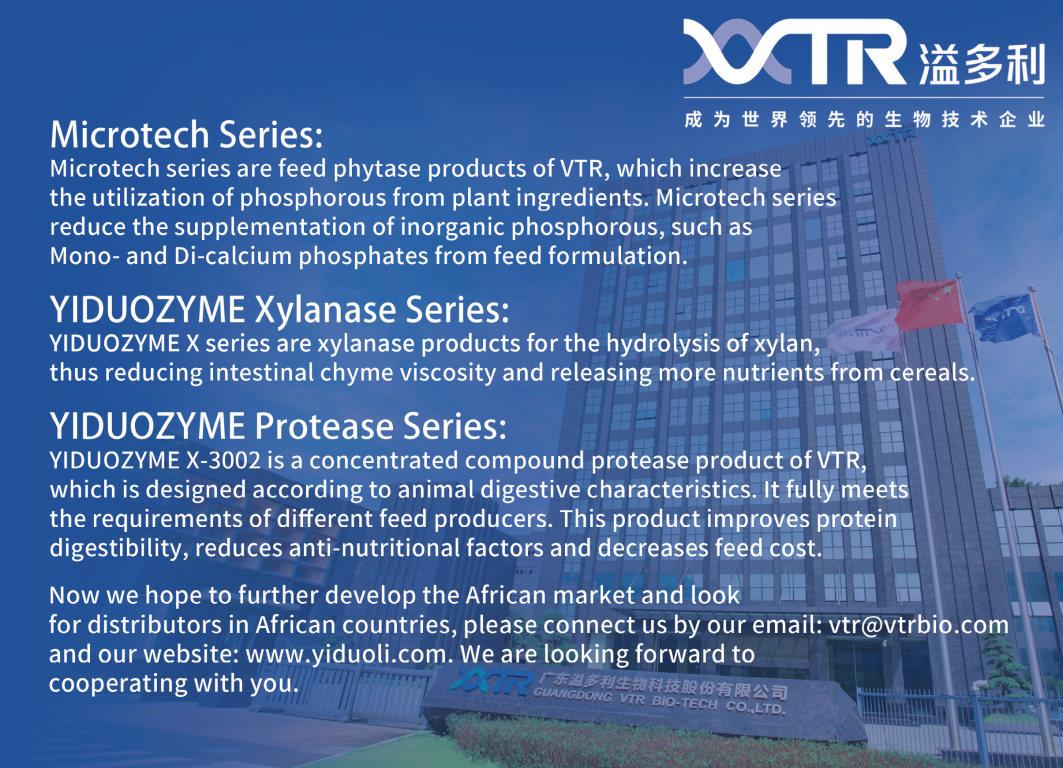
Trends in poultry management are focusing on sustainable production. Fyna Ashwath finds out more on developments that are contributing towards poultry welfare and increasing efficiency.
Ensuring poultry progress
Poultry trends
EuroTier Digital held in February 2021, asked Prof Matthias Schick, DLG innovation committee, to present trends in the sector. The Fair, organised by the DLG (German Agricaultural Society), discovers innovations in modern animal husbandry. "The trends in poultry farming are moving towards increased efficiency and sustainability and towards securing production. The focus is on process engineering measures through optimised lighting, improved automated feeding systems and systems for reducing emissions.
A socially relevant trend in the poultry sector is the automated inovo sex determination of hen eggs using hormone analysis. There are now fully automated systems on the market with acceptable performance and non-invasive removal of allantoic fluid," commented Prof Matthias.
During the event, livestock experts had showcased solutions and innovations in feeding, housing, ventilation and manure treatment that not only help to minimise ammonia in the housing, but prevent it from occurring in the first place.
Market growth
The global poultry market is expected to grow from US$310.7bn in 2020 to US$322.55bn in 2021 at a compound annual growth rate (CAGR) of 3.8%, according to a report by ResearchAndMarkets. The growth is mainly due to the companies rearranging their operations and recovering from the COVID-19 impact, which had
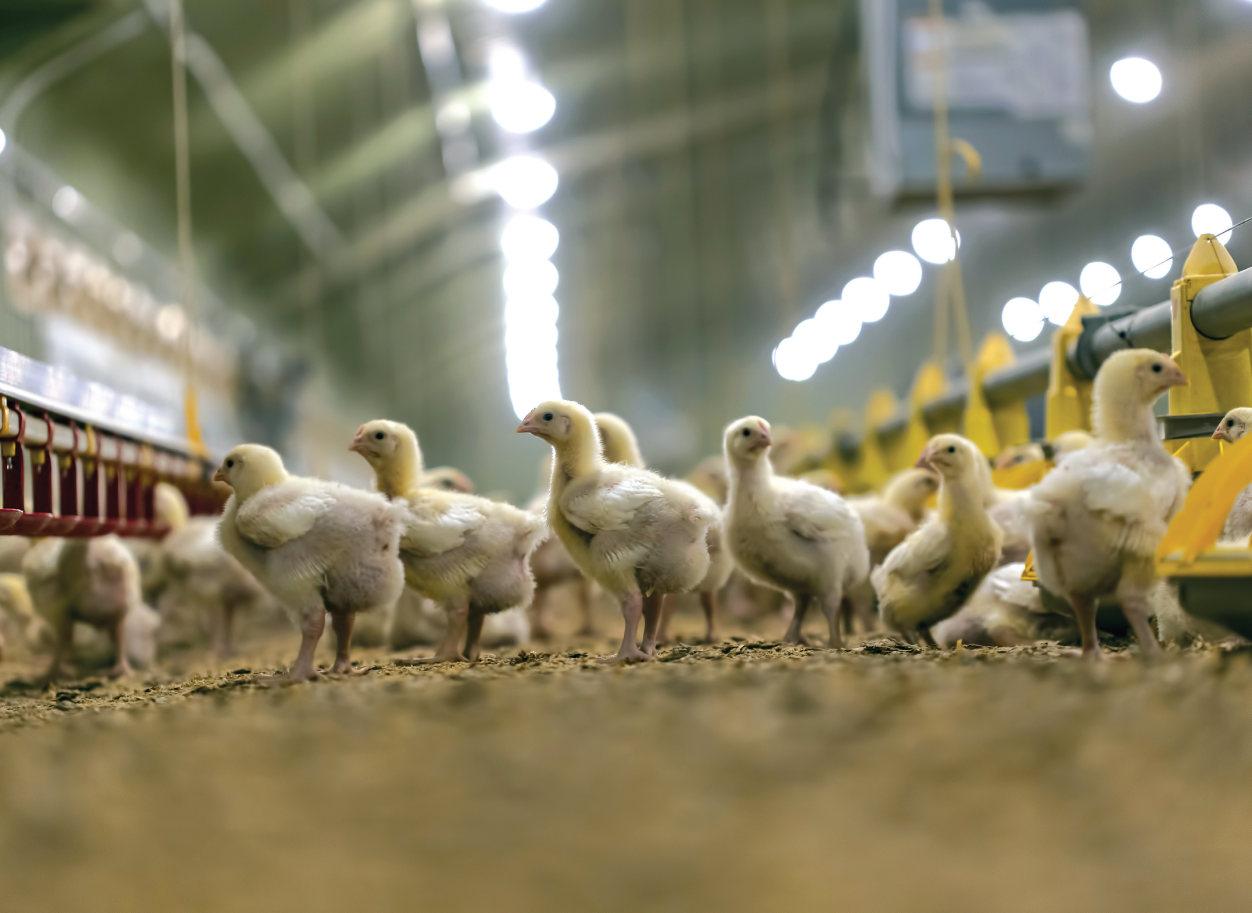
Solutions in feeding, housing, ventilation and manure treatment help minimise ammonia in housing.
earlier led to restrictive containment measures involving social distancing, remote working, and the closure of commercial activities that resulted in operational challenges. The market is expected to reach US$422.97bn in 2025 at a CAGR of 7%.
As with other areas, the poultry sector is continously witnessing technology improvements and developments. We take a look at some innovations that are changing the landscape.
Evonik’s Aminonir
Evonik and its life sciences division, Nutrition & Care, focus on the well-being of both animals and humans. The company's new nearinfrared spectroscopy service, AMINONIR Portable, is the first in the world to analyse amino acids, indepedently of a lab, within minutes. This allows farmers to undertake rapid on-site quality checks and make informed decisions at critical moments in feed production.
Ventilation
Vostermans Ventilation, the Netherlands-based ventilating equipment manufacturer, provide livestock farmers with solutions to for the ideal ventilation for their poultry houses
Good ventilation is indispensable in a poultry house. With the help of mechanical ventilation and air inlets/outlets, it is possible to keep control over temperature, humidity, air speed and CO2 content in the poultry barn, while harmful substances are removed. Too little or too much ventilation results in less efficient growth of poultry, an unnecessarily high energy bill and an unhealthy barn climate for both humans and animals.
Roxell
Roxell, provider of farm equipment for poultry and pigs is collaborating with Serupa in the West African market to provide the complete project, from the building to house systems.
Roxell’s overhead systems provide solutions to improve biosecurity. They handle the feed transport at the site and allow deliveries of feed to be made outside the walls of the company.
Roxell's MiniMax feeder pans for broilers are adapted to the preferences and practices of each poultry farm.
Cobb breeder guide
The new Cobb Broiler Breeder Management Guide includes updated technical expertise in broiler breeder production management.
It emphasises that biosecurity must encompass all operations performed by the breeding stock caretaker. Procedures to prevent the introduction and spread of disease or contamination must be implemented at the hatchery, feed mill, farm operations, general maintenance and by personnel.
Poultry sector outlook for Africa
The poultry sector in Africa is set for growth, despite several challenges.
The Eurotier Digital conference included the presentation of a survey, by Xavier Cadiou, founder and CEO, Agri Reseaux International, a consulting company focused on agriculture and livestock. The survey which was conducted across Africa, with maximum representation of poultry companies, followed by dairy, says that operations have been hugely affected by the pandemic. Almost all companies represented, have been affected by declines in turnover and many companies had reduced operations. However, it forecasts that more and more funds, public and private equities, will invest in agriculture in Africa. h
antonivano/Adobe Stock Image Credit:
